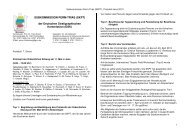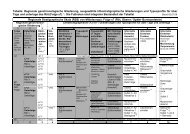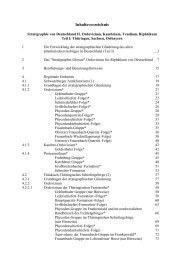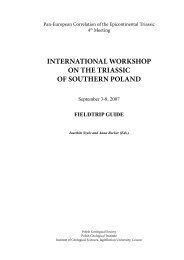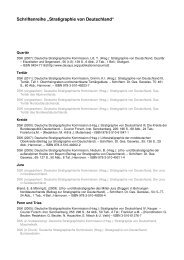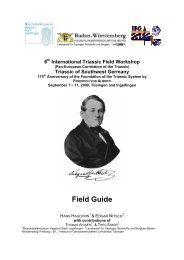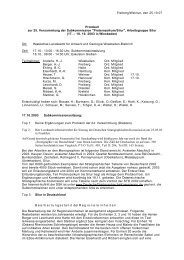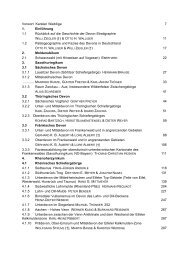International Field Workshop on 'The Triassic of eastern France'
International Field Workshop on 'The Triassic of eastern France'
International Field Workshop on 'The Triassic of eastern France'
You also want an ePaper? Increase the reach of your titles
YUMPU automatically turns print PDFs into web optimized ePapers that Google loves.
Figure III.1: (A) E-W Muschelkalk secti<strong>on</strong> between Emberménil and Saint Just Sauvage: depositi<strong>on</strong>al sequence<br />
geometries-relati<strong>on</strong>ship between time-lines and facies. (B) Wells locati<strong>on</strong>. After Bourquin et al., 1995,<br />
modified.<br />
In the western and northern part <strong>of</strong> the Paris Basin (Fig. III.2), we observed from subsurface data<br />
(well-log and core) that the lower part <strong>of</strong> the Lettenkhole c<strong>on</strong>sists <strong>of</strong> mixed terrigenous-evaporite sediments<br />
(playa floodplain and channel deposits) which thicken west <strong>of</strong> the Aire Fault (Fig. III.2a) and to the north<br />
(Fig. III.2b) (Bourquin and Guillocheau, 1993, 1996). There is no evidence <strong>of</strong> incised valleys like those<br />
described in the German Basin (‘Hauptsandstein’ Formati<strong>on</strong>, Aigner and Bachmann, 1992). In the <strong>eastern</strong><br />
part, the evoluti<strong>on</strong> from the mfs to the ‘Calcaire à térébratule’ and to the flood plain deposits <strong>of</strong> the Middle<br />
Lettenkohle attests a progradati<strong>on</strong> phase that ends this cycle.<br />
25



